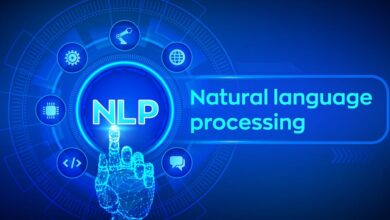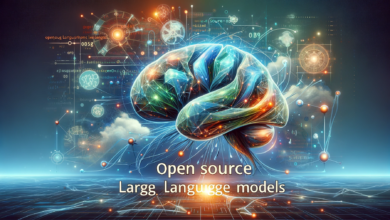AI Ethics Framework: Building Responsible AI Systems
As artificial intelligence (AI) continues to advance and permeate various aspects of our lives, it is essential to develop a robust AI ethics framework. This framework provides guidance and principles for building and deploying AI systems that prioritize ethical considerations, fairness, transparency, and accountability. In this article, we will explore an AI ethics framework and provide examples to illustrate its practical implementation.

Table of Contents
Table of Contents
- Introduction
- Understanding the Need for AI Ethics Frameworks
- Key Components of an AI Ethics Framework
- Ethical Principles
- Fairness and Bias Mitigation
- Transparency and Explainability
- Accountability and Responsibility
- Privacy and Data Protection
- Human-Centric Design
- Examples of AI Ethics Frameworks
- The IEEE Global Initiative on Ethics of Autonomous and Intelligent Systems
- The European Commission’s Ethical Guidelines for Trustworthy AI
- The Partnership on AI’s Ethical Framework for AI
- Conclusion
- Frequently Asked Questions (FAQs)
1. Introduction
AI technologies offer immense potential for innovation and advancement across various domains. However, without ethical considerations, AI systems can inadvertently perpetuate biases, discriminate against certain groups, compromise privacy, and create unintended consequences. An AI ethics framework provides a structured approach to address these concerns and ensure the responsible development and deployment of AI systems.
2. Understanding the Need for AI Ethics Frameworks
AI ethics frameworks serve as a guiding compass to navigate the complex landscape of AI development and deployment. They help organizations establish principles, policies, and practices that align with ethical values and societal expectations. These frameworks foster trust, accountability, and transparency, enabling AI systems to operate in a manner that respects human rights and dignity.
3. Key Components of an AI Ethics Framework
An AI ethics framework typically encompasses the following key components:
a. Ethical Principles
Ethical principles form the foundation of an AI ethics framework. These principles, such as fairness, beneficence, non-maleficence, and respect for autonomy, provide overarching guidelines for ethical decision-making throughout the AI system’s lifecycle.
b. Fairness and Bias Mitigation
Ensuring fairness in AI systems involves mitigating biases and discriminatory outcomes. Techniques like data preprocessing, algorithmic auditing, and diverse training data can help identify and address biases to ensure equitable treatment and outcomes for all individuals.
c. Transparency and Explainability
Transparency and explainability are essential for building trust and understanding in AI systems. Organizations should strive to make AI algorithms and decision-making processes transparent and provide understandable explanations of how AI systems arrive at their outcomes.
d. Accountability and Responsibility
AI systems should be designed with mechanisms for accountability and responsibility. Organizations should clearly define roles and responsibilities for the development, deployment, and monitoring of AI systems. In the event of adverse outcomes, there should be mechanisms in place to address accountability.
e. Privacy and Data Protection
Respecting privacy and protecting personal data are critical aspects of an AI ethics framework. Organizations should implement robust data protection measures, including data anonymization, secure storage, and compliance with relevant data protection regulations.
f. Human-Centric Design
Human-centric design ensures that AI systems prioritize human well-being and values. It involves involving end-users and affected stakeholders in the design and development process, considering their needs, preferences, and potential impact.
4.Examples of AI Ethics Frameworks
Several organizations and initiatives have developed AI ethics frameworks. Here are three notable examples:
a. The IEEE Global Initiative on Ethics of Autonomous and Intelligent Systems
The IEEE Global Initiative’s Ethically Aligned Design framework provides a comprehensive set of principles and guidelines for the ethical development and deployment of AI systems. It covers areas such as transparency, accountability, algorithmic bias, and human rights considerations.
b. The European Commission’s Ethical Guidelines for Trustworthy AI
The European Commission has developed ethical guidelines to ensure trustworthy AI. It emphasizes human agency and oversight, technical robustness, and societal impact assessment. The guidelines promote fairness, transparency, and accountability in AI systems.
c. The Partnership on AI’s Ethical Framework for AI
The Partnership on AI, a collaborative effort among industry, academia, and civil society, has established an ethical framework for AI. It focuses on fairness, transparency, and accountability, while also addressing areas such as privacy, security, and broad societal benefit.
Conclusion
An AI ethics framework is essential for building responsible and ethical AI systems. By incorporating ethical principles, fairness, transparency, accountability, privacy protection, and human-centric design, organizations can develop AI systems that align with societal values and address potential risks and challenges. Examples such as the IEEE Global Initiative, the European Commission, and the Partnership on AI demonstrate practical implementations of AI ethics frameworks.
Further Reading: Implementing AI Ethics in Organizations: A Quick Guide for Leaders
Frequently Asked Questions (FAQs)
Q1. Why is an AI ethics framework important?
An AI ethics framework is important to guide the development and deployment of AI systems that prioritize ethical considerations, fairness, transparency, and accountability. It helps address potential risks and ensure responsible AI practices.
Q2. What are some key components of an AI ethics framework?
Key components of an AI ethics framework include ethical principles, fairness and bias mitigation, transparency and explainability, accountability and responsibility, privacy and data protection, and human-centric design.
Q3. Can you provide examples of AI ethics frameworks?
Examples of AI ethics frameworks include the IEEE Global Initiative on Ethics of Autonomous and Intelligent Systems, the European Commission’s Ethical Guidelines for Trustworthy AI, and the Partnership on AI’s Ethical Framework for AI.
Q4. How can an AI ethics framework promote fairness in AI systems?
An AI ethics framework promotes fairness in AI systems by addressing biases and discrimination, ensuring diverse training data, and implementing algorithmic auditing and transparency measures.
Q5. Why is transparency important in AI systems?
Transparency is important in AI systems to build trust and understanding. It helps users and stakeholders comprehend how AI systems make decisions, detect potential biases, and evaluate the fairness and reliability of the outcomes.
Machine Learning books from this Author:




